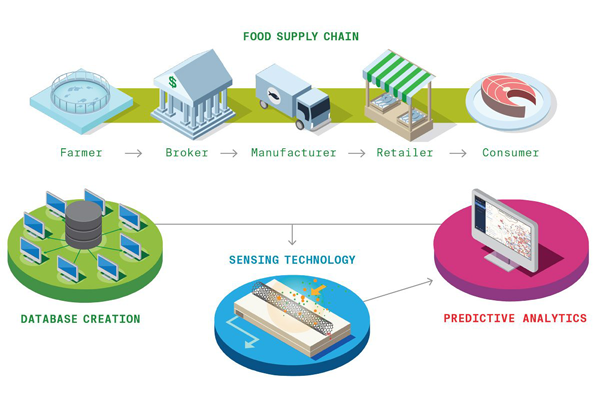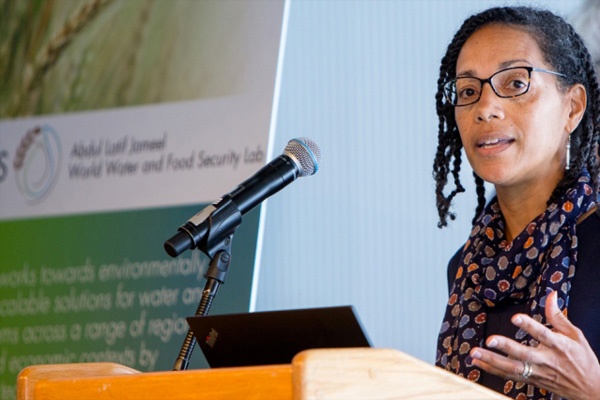Our Research A data-driven approach to managing food security in global supply chains

Image credit: iStock Images
Principal Investigators
Retsef Levi
- Spencer Standish (1945) Professor of Management
- Professor of Operations Management
- Co-Director of Leader for Global Operations Program
- Sloan School of Management
Tauhid Zaman
- Former Assistant Professor of Operations Management
- Sloan School of Management
Y. Karen Zheng
- George M. Bunker Professor
- Associate Professor of Operations Management
- Sloan School of Management
Challenge:
How can informed monitoring and regulation of global food supply chains most effectively ensure the safety of our food supply?
Research Strategy
- Studied both the farm supply chain and the global shipping supply chain
- Identified risk measures and developed models that predict food safety risks
- Developed technical and policy solutions to enhance regulation and improve food supply chain monitoring
Project description
It is estimated that 15% of all food products consumed in the U.S. are imported, whereas in some product categories, such as seafood, more than 80% is imported. The global scale of food supply chains implies that food supplies can be susceptible to changing socio-economic and environmental conditions in regions that are very distant from the end market. In 2011, President Obama signed into law the FDA Food Safety Modernization Act, giving the FDA new authorities to regulate the ways foods are grown, harvested, and processed. The Act also holds companies responsible to guarantee the quality of their supply chains. This Act reflects the increasing concerns of governments and firms regarding global supply chain-related security and safety threats. In the meantime, the disproportionate imbalance between rapid growth of regulated food imports and marginal increase in inspection and port sampling capabilities makes it almost mandatory to develop more systematic and data-driven approaches to identify ‘risky’ products and allocate the scarce inspection resources in the most effective way. The focus of this project was on studying two major parts of global food supply chains: (i) farming supply chains that connect farmers who grow plants and animals with food manufacturers; (ii) shipping supply chains that connect food manufacturers with markets of consumers.
In particular, this research team focused on understanding how the structure and dynamics of these supply chains are correlated with and impact disruption (food security) and quality (food safety) related risks. The aim of this project is to develop: (i) qualitative and quantitative measures of what structural features and characteristics of farming and shipping food supply chains are correlated with increased levels of disruption and safety risks; (ii) predictive models to dynamically identify evolving disruption and safety risks based on supply chain structures and dynamics.
The outcomes of this project can aid in informing various decisions faced by firms and regulatory bodies, such as (i) regulation of global supply chains; (ii) assessment of risky food supply chains and recommended designs with increased security and safety levels; (iii) real-time risk management strategies to monitor food supply chains, dynamically assessing and prioritizing risks and employ appropriate interventions; (iv) development of technical and technological solutions to better monitor and trace food supply chains. The research methodologies of this project integrated qualitative analysis of case studies and field data to derive hypotheses with mathematical modeling, big data analytics, and state-of-the-art statistical analysis of large-scale networks.
Outcomes
- Developed method based on objective data to measure regulatory quality in farming supply chain in China
- Identified that supply chain dispersion and weak governance are key risk factors for intentional adulteration in farming supply chain
- Developed mathematical model able to determine how various factors in the farming supply chain impact the risk of economically motivated adulterations (EMA) in food and successfully used this model to capture EMA
- Developed supply chain-based risk models of shippers, manufacturers, and consignees and determined systemic risk factors in shipping supply chains of high-risk companies
News
Additional Details
Impact Areas
- Food
Research Themes
- Economics, Policy, & Practices
- Transforming Food Systems
- Modeling & Data Analytics
Year Funded
- 2015
Grant Type
- Seed Grant
Status
- Completed





